Baking a perfect pie crust can be one of the most satisfying yet difficult tasks in the kitchen. But with this method using an all butter pie crust recipe, you will rule the day when you make this crust with pies and quiches!
In order to get a crust that is consistently flaky and buttery, you just need to adhere to a few simple steps. In this post I’ll cover some helpful tips on how to mix your dough (with a secret ingredient) so that it’s easy to roll out and a super simple tip to making rolling out the dough completely failproof!
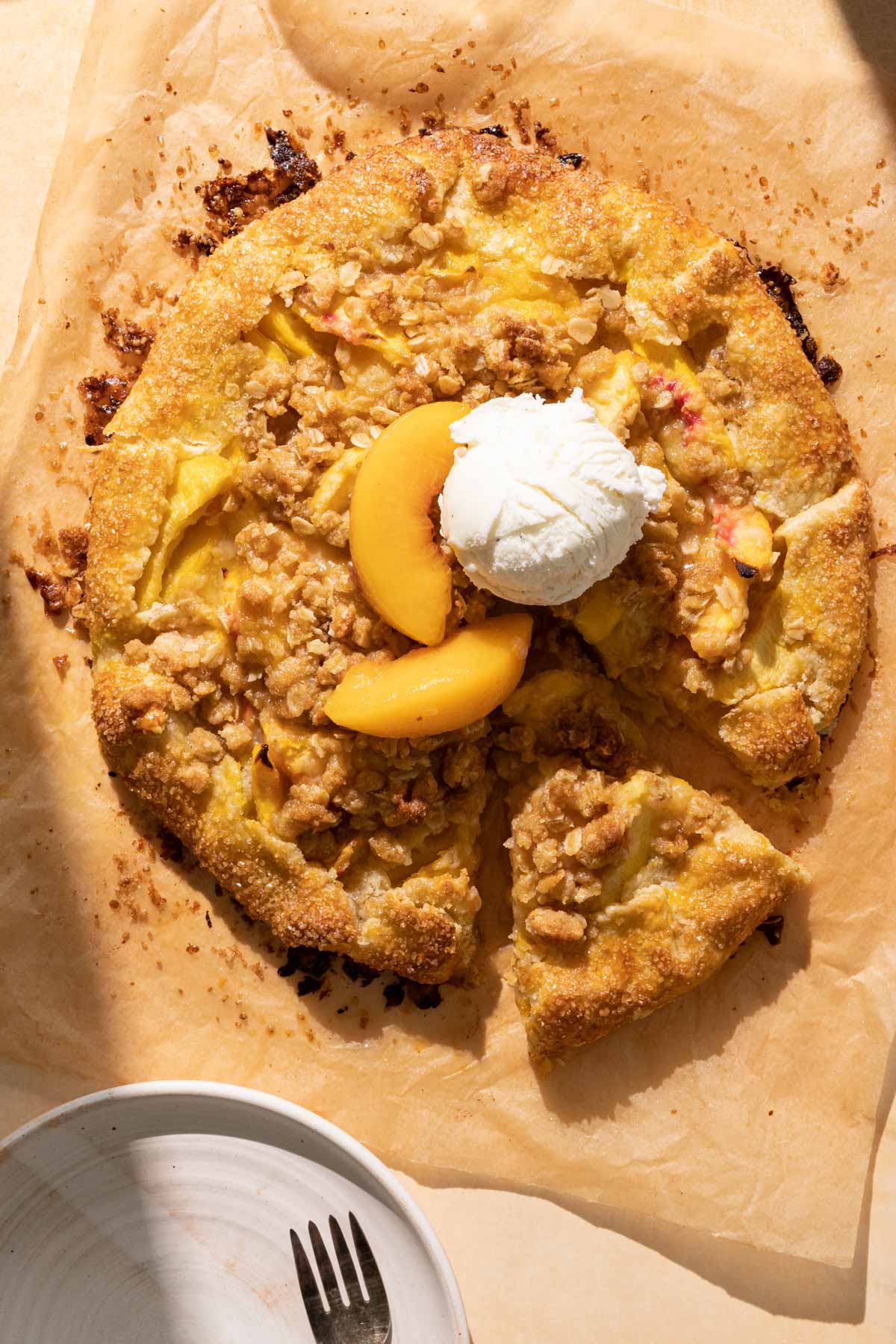
For years I have marveled at my dad’s pie crust.
His trick is to add an egg to help bind the ingredients. Many professionals urge against adding an egg because it adds too much moisture. So I came up with a compromise and added only the egg white to help with binding. I have tried recipes from cookbooks and online sources who claim they have tested over 100 recipes to get the perfect crust. When I put this recipe up against any others, I still find this one to be the flakiest I have ever tried, and less tricky to roll out. It’s win-win!
Pie crust tip #1
Keep all ingredients cold. That means placing the mixing bowl, liquids, flour, butter in the freezer for about 20 minutes prior to mixing. If the fat is too warm, it will melt in the dough. You need the flour and fat to be separated so that the when steam is released from the fat, you have pockets of flaky dough, versus dough that is all the same texture.
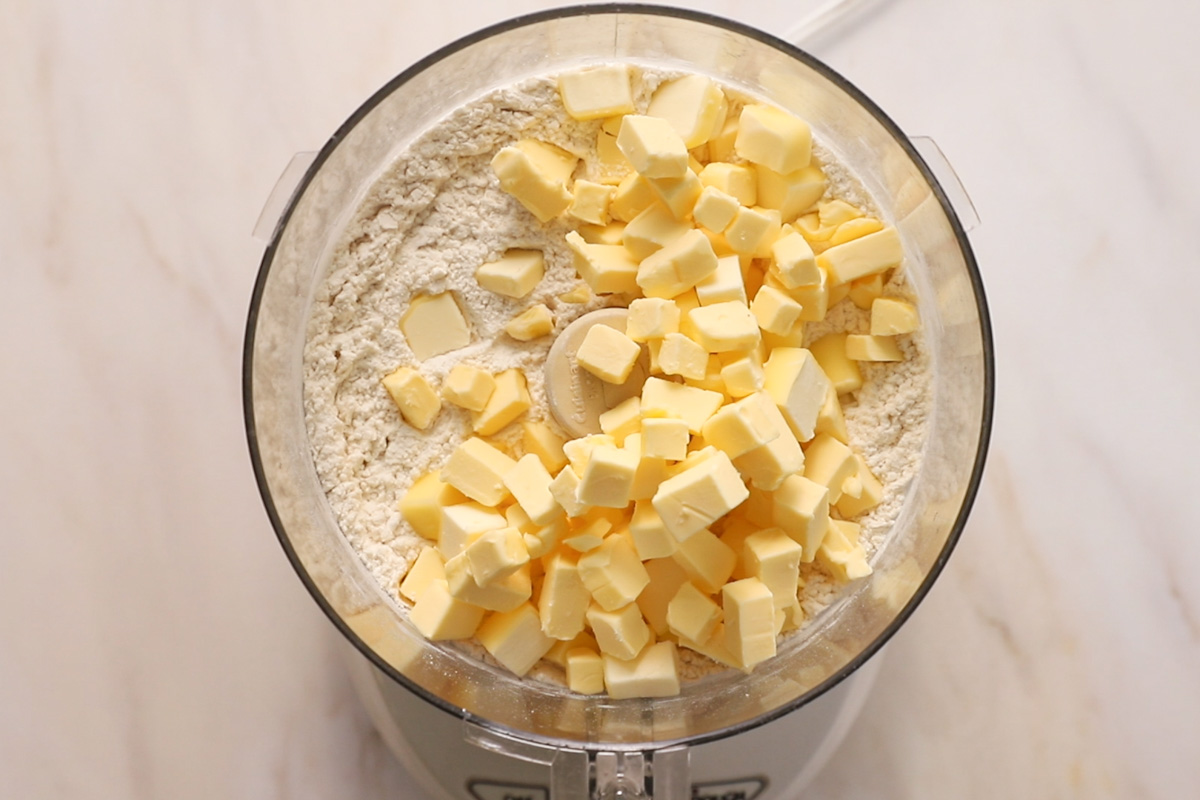
Pie Crust Tip #2
Cut in the fat. Whether you mix by hand with a pastry cutter or by mechanical means with a food processor, one must “cut in” the butter or fat until it’s distributed in small chunks throughout the flour mixture. Again, this will allow the fat to be separated so that steam pockets create a flaky texture.
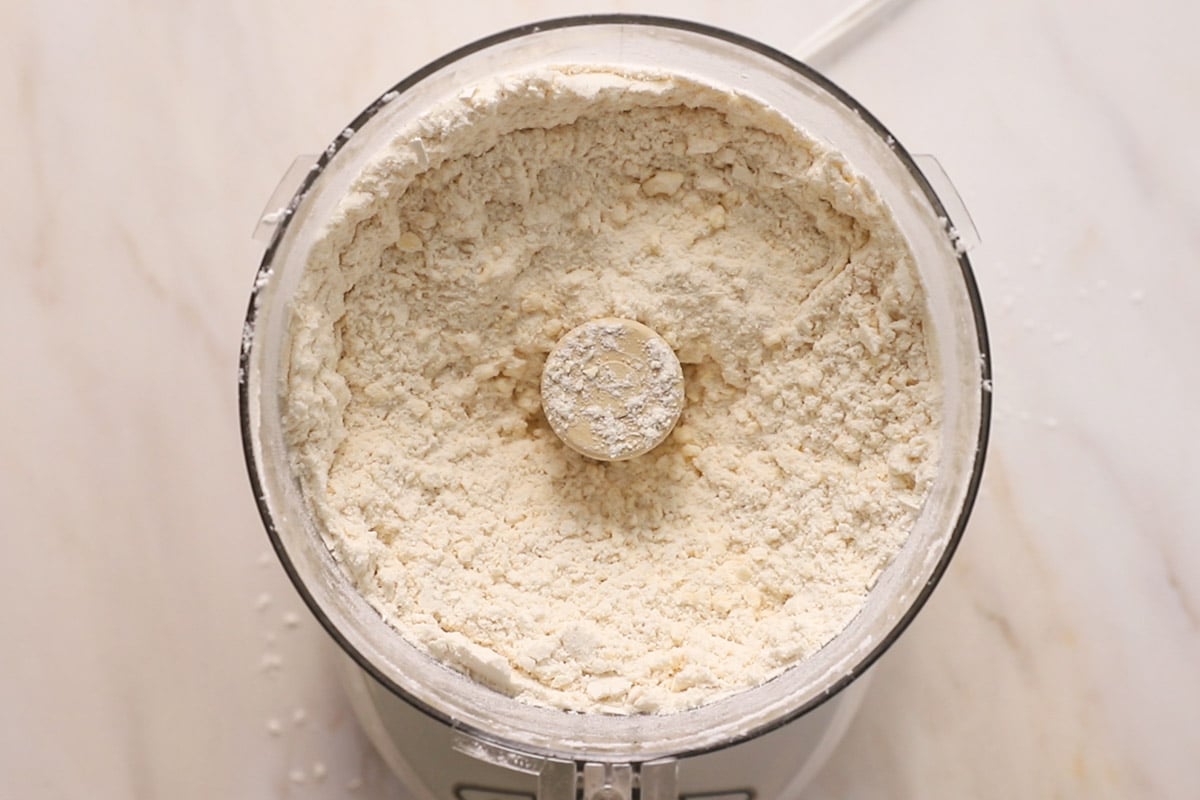
Pie Crust Tip #3
Don’t over-mix. Only mix the dough until it starts to come together when pressed between your fingers. It will still be loose and crumbly, but over-mixing, once the liquids are added, activates the gluten, thereby creating a tough crust.
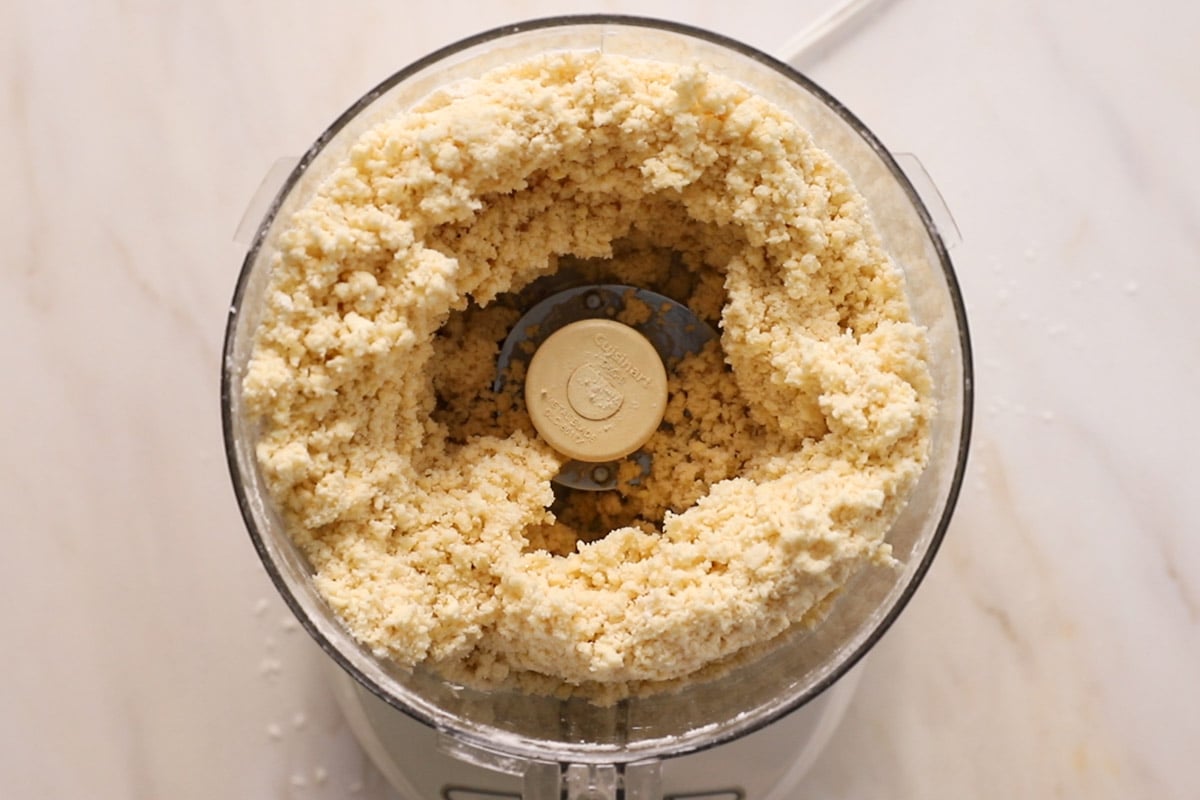
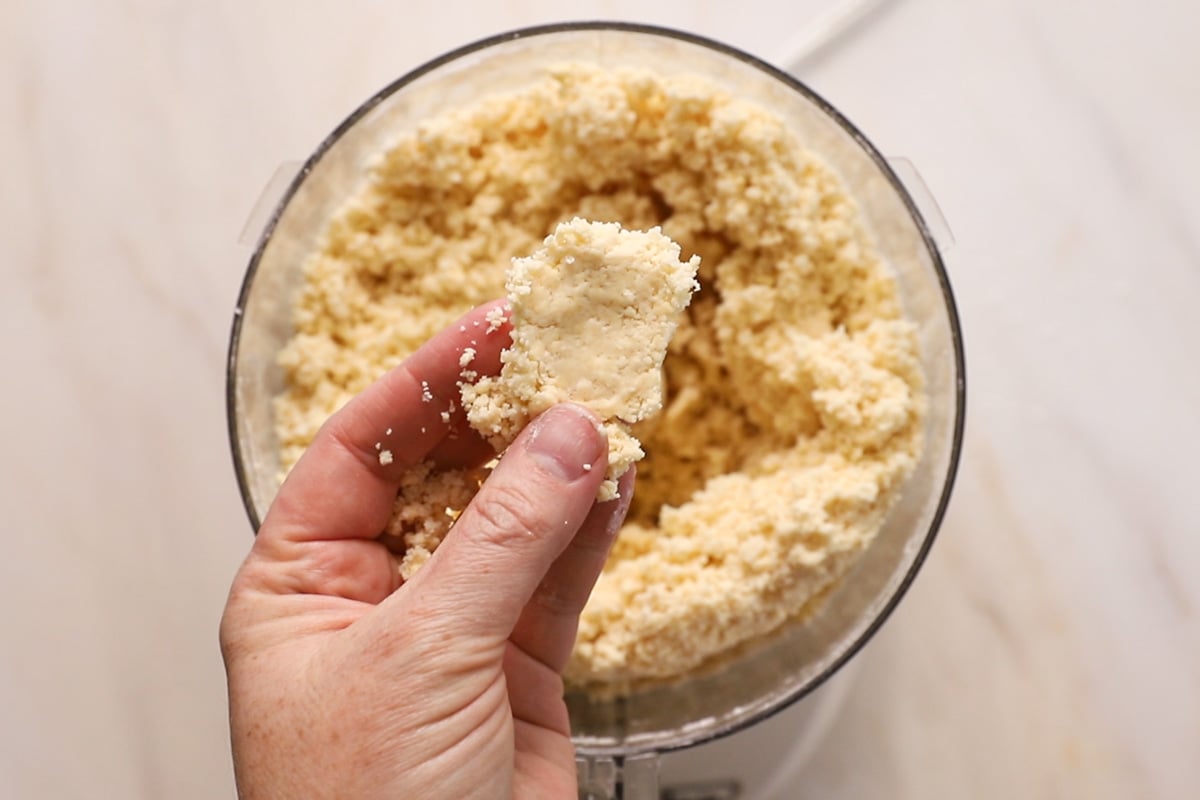
Pie Crust Tip #4
Rest the dough in the fridge. Resting the dough in the fridge for one hour (or up to 24 hours) allows the gluten to relax and the fat to chill once again. It will be much easier to roll out once it has properly rested. Cover with plastic wrap or parchment paper and place in the fridge. Once I have rolled out and shaped the dough in a pie dish, I like to pop it back in the freezer (especially if my kitchen is warm) for 20 minutes to firm back up.
Pie Crust Tip #5
Use parchment paper to easily roll out the dough without tearing it. Rolling the dough out between two layers of plastic wrap or parchment paper keeps the dough together perfectly.
Once the crust is rolled, the plastic or parchment removes easily. To place in a pie shell, simply remove the top layer of plastic and invert in a pie shell. Gently press it into the shell and remove the second layer of plastic and shape the edges. Chill the dough uncovered for 20 minutes before blind-baking or filling. This will help to reduce what George Castanza so memorably called, SHRINKAGE!
Even better, if you are making a crostata, use two sheets of parchment to roll out and simply remove the top layer of parchment and keep the rolled out dough on the bottom sheet of parchment and place it on sheet pan. Fill your crostata, fold in the edges and bake on the sheet pan
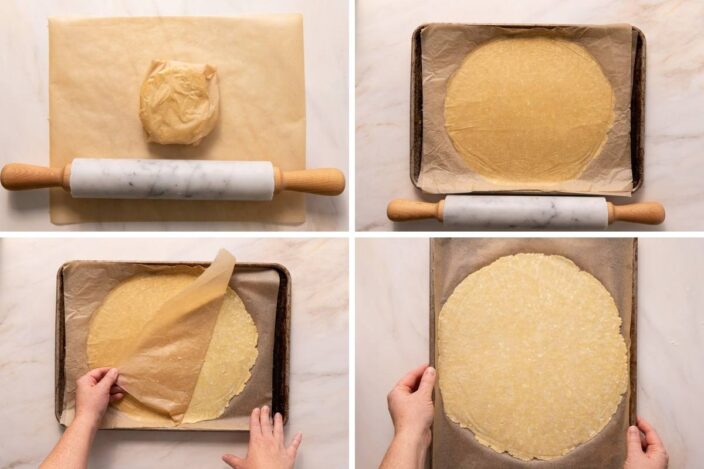
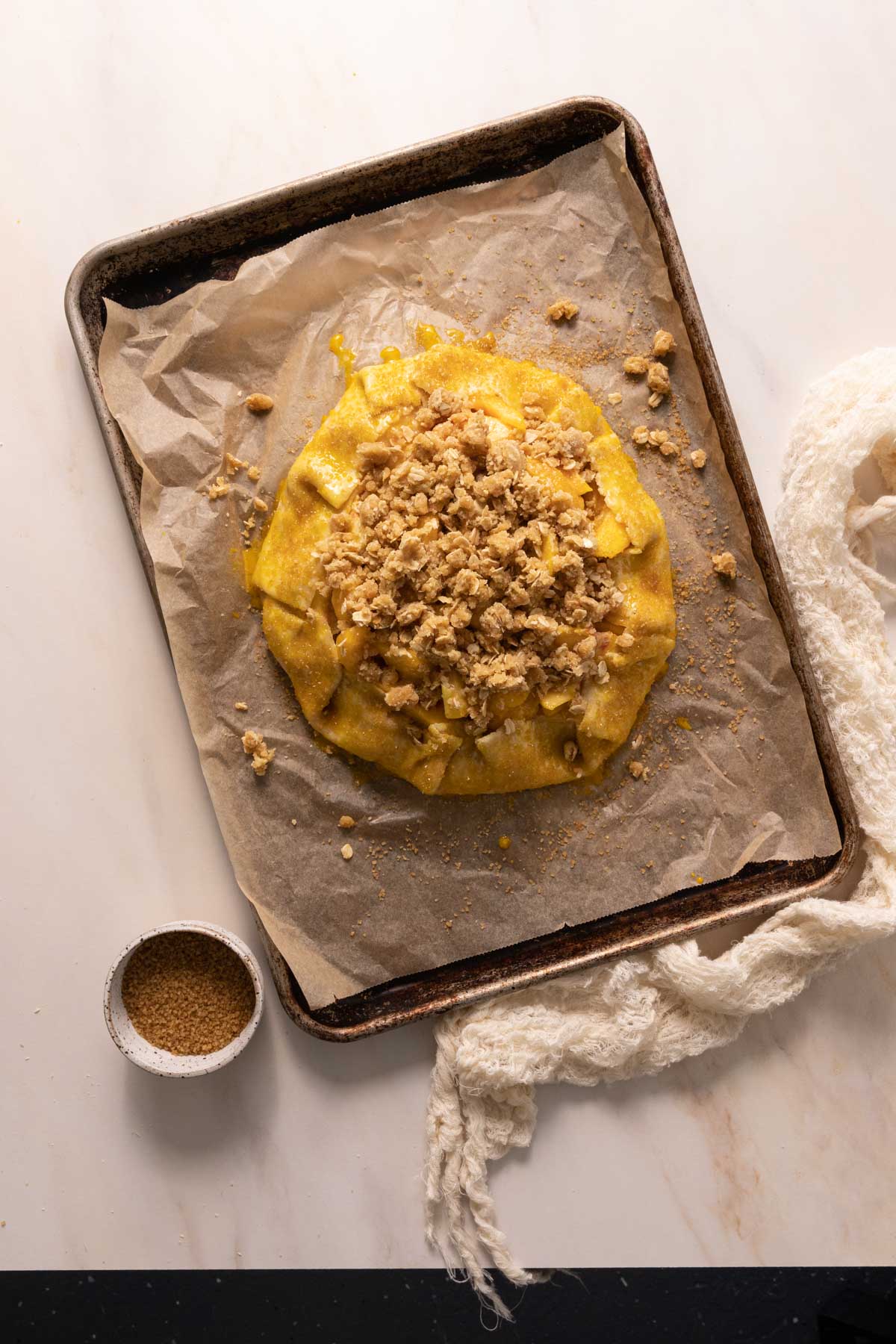
Recipes to use the pie crust with
- How about a Peach Crostata with Spiced Crumble that you bake right on a sheet pan?
- Or an incredibly delicious French Beer Quiche that is my favorite quiche of all time!
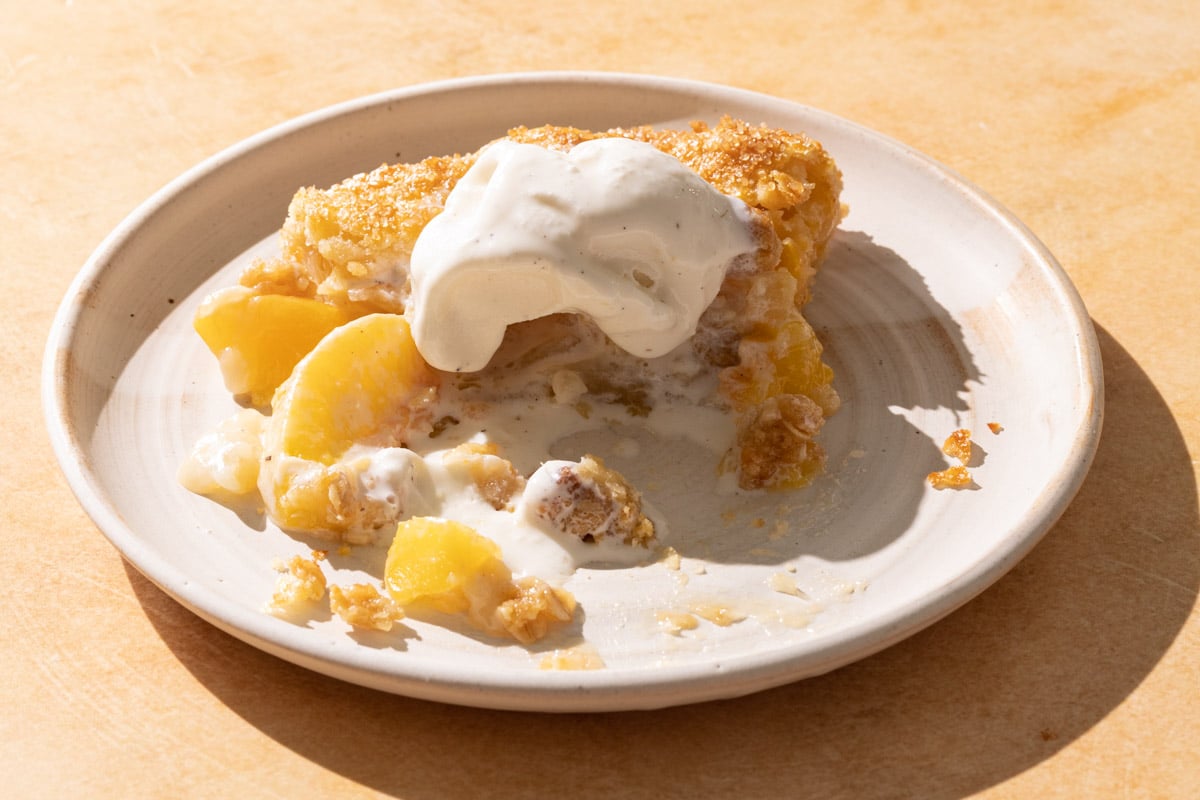
Once you get comfortable making your own pie crust, you won’t want to buy store-bought ever again!
Bon Appetit Ya’ll,
Leslie O.
Perfect Pie Crust
Ingredients
- 2 cups all purpose flour
- 1 Tbsp sugar or 1/2 Tbsp. for savory quiches
- 3/4 tsp salt
- 1 cup butter (or 2 sticks, 16 TBSP)
- 4 Tbsp cold water you can add ice to the water to keep it cold in the fridge
- 1 egg white
Instructions
- This recipe works well in a food processor, but you can use a pastry cutter to mix by hand.
- Cut the butter into small cubes.
- Measure out all of your ingredients and place the butter, flour, salt, sugar, along with your mixing bowl in the freezer to get nice and cold.
- Add ice to the water and place in the fridge to keep cold.
- When the ingredients are nice and chilled, mix the flour, sugar, and salt together. If you are using a food processor, pulse the dry ingredients. If you are using a mixing bowl, whisk the dry ingredients together.
- Remove the butter from the freezer and pulse it in the food processor with the dry ingredients until the fat is in tiny chunks. If using a mixing bowl, Mix the butter and dry ingredients with a pastry cutter until they are in tiny chunks.
- Mix the beaten egg white. Pulse in the egg white and cold water until the dough just starts to come together when pressed between your fingers. The mixture will still be crumbly.If mixing by hand use a wooden spoon or a rubber spatula.
- Press dough together into a thick flat disk and cut into two disks and cover with plastic wrap or parchment paper and place in the fridge for 30 minutes to one hour, or up to 24 hours.
- Take one of the disks of dough out of the fridge and split into two disks. Cover the extra disk and place back in the fridge if you are using both crusts, or freeze for later use.
- Roll the dough out in between two sheets of plastic wrap or parchment paper.
- Remove the top layer of the plastic wrap or parchment paper and invert into a pie pan. Then remove the bottom layer of parchment or plastic wrap.If you are making a crostata, you will need to bake it on parchment paper on a sheet pan, so only remove the top piece of parchment and make sure not to use plastic wrap while rolling it out.
- Place in the freezer for about 20 minutes to re-firm.
- Bake as needed.

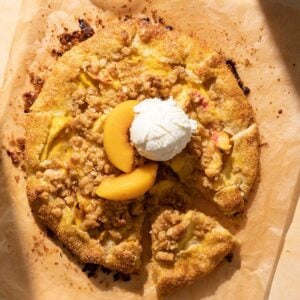
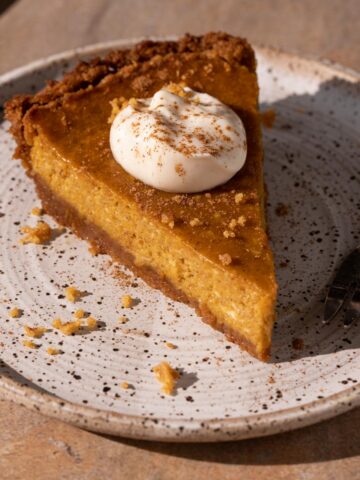
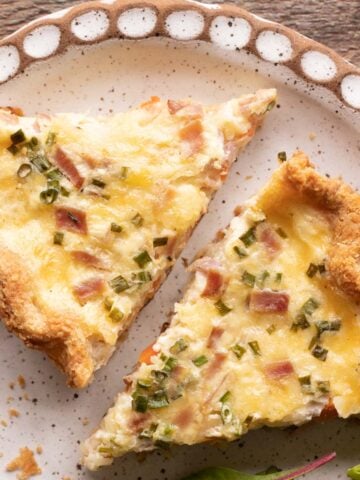
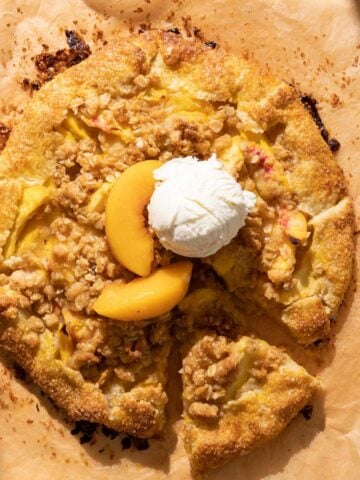
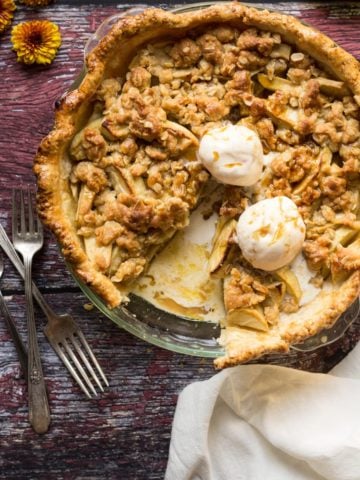
hi leslie 🙂 can vinegar be substituted for the vodka? i don’t ever have alcohol in the house unless it’s to be made into a flavoring 🙂 thanks so much for your time in responding!
Great question! Actually, vinegar is a common ingredient in pie crusts so you can definitely substitute it for vodka. I suggest using no more than 1 Tbsp of white vinegar since it has a bit of pungent flavor. Happy baking!!
thank you!
Hi,
I tried this recipe out last night and mine is way more crumbly than yours. I won’t stay together at all. I was going to add a bit more water/vodka to see if I could “fix” it. Any other recommendations?
Thanks for sharing your experience Annie. Yes, I would add just a touch of water (1-2 tsp. at a time) until it comes together. If you pulse it again just a few times in the food processor, it should rehydrate and stay together. Sometimes in the colder months, flour absorbs more water because it’s so dry out. You can most likely salvage the crust without having to make it again.
Let me know how it turns out!